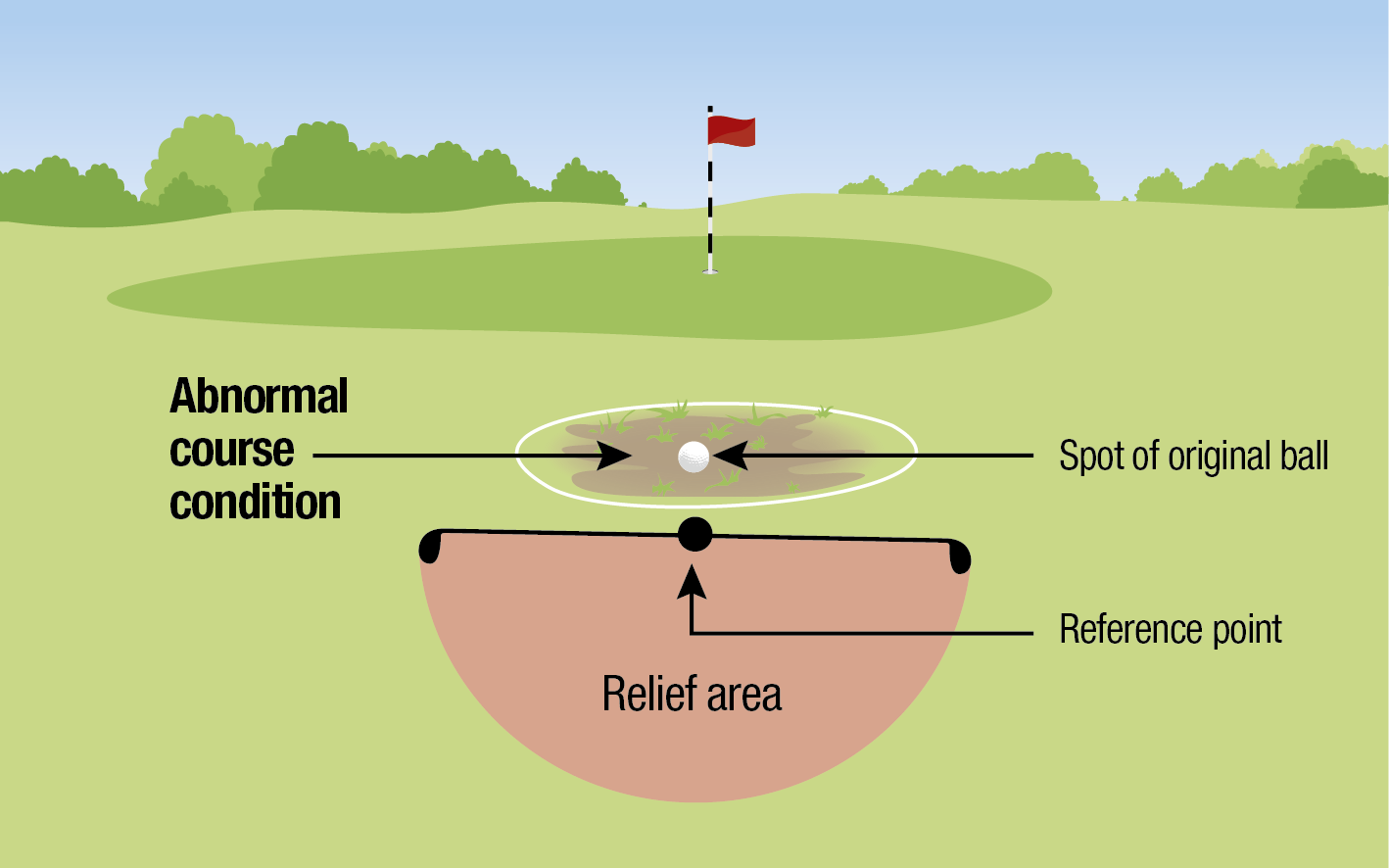What Are Abnormal Course Conditions?
What are abnormal course conditions and, importantly, do you know what to do when you encounter them? We'll help you under Rule 16.1


Now I know what you’re thinking. What on earth are abnormal course conditions? Depending on where you play your golf, you’re more likely to experience this than others. One thing I can assure you though, you will come across this in your golfing lifetime.
When we refer to abnormal conditions, we refer to Rule 16.1. We’ll break down what is quite a complex and potentially debatable set of rules so you know exactly what to do when the time comes.
What are they?
Firstly, we need to understand what abnormal conditions are. They are animal holes, ground under repair (GUR), immovable obstructions or temporary water.
They each come with their own definition. An animal hole is a hole dug in the ground by any animal, except for holes dug by animals that are also defined as loose impediments (such as worms or insects).
The term animal hole includes the loose material the animal dug out of the hole, any worn-down track or trail leading into the hole and any area on the ground pushed up, or altered, as a result of the animal digging the hole.
Ground under repair is any part of the course the Committee (in this case, commonly the greenkeepers) deem to be under repair. It is usually marked to make you aware but that is not always the case.
Subscribe to the Golf Monthly newsletter to stay up to date with all the latest tour news, equipment news, reviews, head-to-heads and buyer’s guides from our team of experienced experts.
Ground under repair includes all ground inside the edges of the defined area and any grass, bush, tree or other growing or attached natural object rooted in the defined area. Any holes made by greenkeeping staff, whether marked or otherwise, are also defined as ground under repair. The same applies for any other areas impacted by maintenance, for example, grass cuttings, leaves or any other material piled for later removal.
An immovable obstruction is any obstruction that can't be moved without unreasonable effort or without damaging the obstruction or the course. It must also not meet the criteria of movable obstruction (which by definition, is the exact reverse). The Committee can determine any obstruction to be immovable, even if it meets the definition of movable, so I would recommend consulting them if you are unaware at your club.
Temporary water is exactly as it sounds. An accumulation of water on the surface of the ground (such as puddles from rain) that is not in a penalty area and can clearly be seen prior to taking a stance without excessively pressing down with your feet. Dew and frost are not temporary water. Snow and natural ice are either loose impediments or, when on the ground, temporary water.
Rule 16.1 does not give relief from movable obstructions, boundary objects (such as out of bounds posts/fences) or integral objects.
When does it exist?
You are affected by abnormal course conditions if either of the following is true:
1. Your ball rests on an abnormal condition
2. If you ball is touching an abnormal condition
3. If the abnormal condition physically interferes with your intended stance or area of intended swing; or
4. If the abnormal condition intervenes with the line of play. This however, is only applicable when on the putting green.
If the abnormal condition is close enough to distract you but doesn’t meet the above requirements, then there is no interference under the rules. You are not entitled to relief if the above is true but your ball lies within a penalty area or, quite obviously, out of bounds.
No relief can be given if the ball lies within a position where it is unreasonable to play. Now this is admittedly subjective but keep in mind that the rule is designed to prevent a player from obtaining free relief where it is unreasonable for them to make a stroke because of interference by something from which free relief is not available.
It could be classed as unreasonable if the ball lies within a bush and you would have otherwise been unable to make, or attempt, a stroke. Equally, the player is not able to choose a club or manipulate their stance / direction of play in order to achieve interference. As with any rules decisions, you must ensure your playing partner is in agreement prior to any relief being taken.
Relief
Once you have determined that you are impacted by abnormal course conditions, you can consider relief. Under this rule there is no penalty. One thing to consider is that you don’t have to take relief. You can play the ball as it lies, although it’s likely you’ll be at a disadvantage.
Taking relief is very simple however, made endlessly complicated. There are a small number of steps to follow to do so successfully:
1. Mark your ball with a tee peg (or similar). This is to mark the area where your ball originally was at rest. You may clean it should you wish
2. Identify your nearest point of relief. This is the closest area where you are no longer impeded by the abnormal course conditions. It must be no closer to the hole. The R&A provide a nice image to help with this one

3. Mark your nearest point of relief with a tee peg (or similar)
4. Drop the ball from knee height within one club length of that area
5. Assuming your ball comes to rest within one club length of your relief point, and no nearer the hole, you may play on
6. If not, perform the drop twice before placing it at the point where it initially touches the ground. Once it’s at rest, continue to play
Bunkers
If you experience adverse course conditions in a bunker, the same rules apply. You must however, drop the ball in the bunker. If it is not possible to take relief within the bunker, for example because it is flooded (thanks, Mother Nature) then by the latter of the law, you must take relief under a one stroke penalty and dropping on a line from the flag and through the ball.
In these circumstances, it's likely your club will implement a local rule which determines the bunker(s) as Ground Under Repair and allow you drop without penalty. I would advise you to check with your Professional on that one.
Putting Green
If abnormal course conditions effect your ball, or line of play, on the putting green then you are entitled to free relief. The nearest point of relief must be on the putting green or general play area. This refers to the fringe and fairway. You must then follow the procedures for dropping the ball as we have outlined above.

Lost Ball
If you can’t find your ball and it is known, or virtually certain, that the ball came to rest in or on an abnormal course condition then the player may take relief under no penalty. You must use the estimated point where the ball last crossed the edge of the abnormal course condition and use that as your point to find the nearest point of relief.
Once the drop is complete, the original ball is no longer in play and must not be played. This is true even if the ball is later found (within the three minute search time) If it is not known, or it is not virtually certain, that the ball came to rest in or on an abnormal course condition then the ball is deemed lost and appropriate relief must be taken (Rule 18.2).

James joined Golf Monthly having previously written for other digital outlets. He is obsessed with all areas of the game – from tournament golf, to history, equipment, technique and travel. He is also an avid collector of memorabilia; with items from the likes of Bobby Jones, Tiger Woods, Francis Ouimet, Arnold Palmer, Lee Trevino, Adam Scott and Ernie Els. As well as writing for Golf Monthly, James’ golfing highlight is fist bumping Phil Mickelson on his way to winning the Open Championship at Muirfield in 2013. James grew up on the east coast of England and is the third generation of his golfing family. He now resides in Leeds and is a member of Cobble Hall Golf Club with a handicap index of 1.7. His favourite films are The Legend of Bagger Vance and Tin Cup.